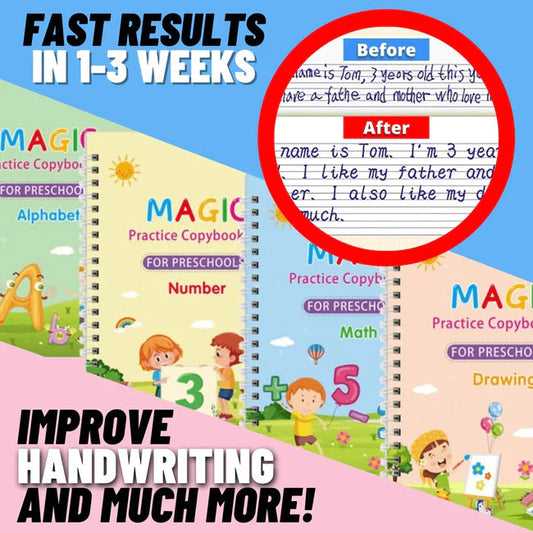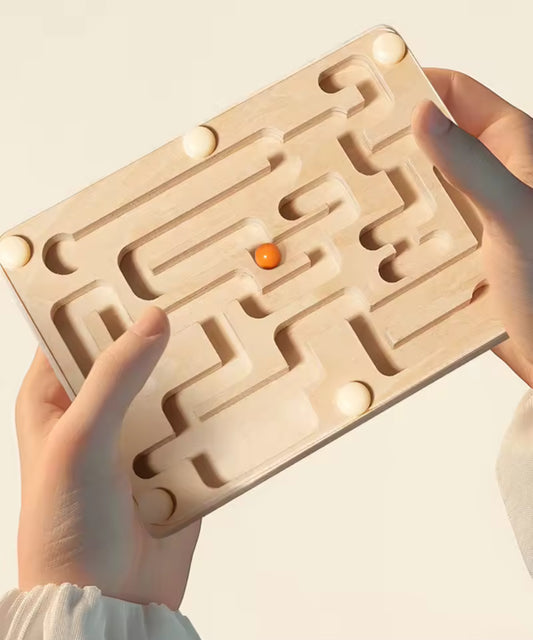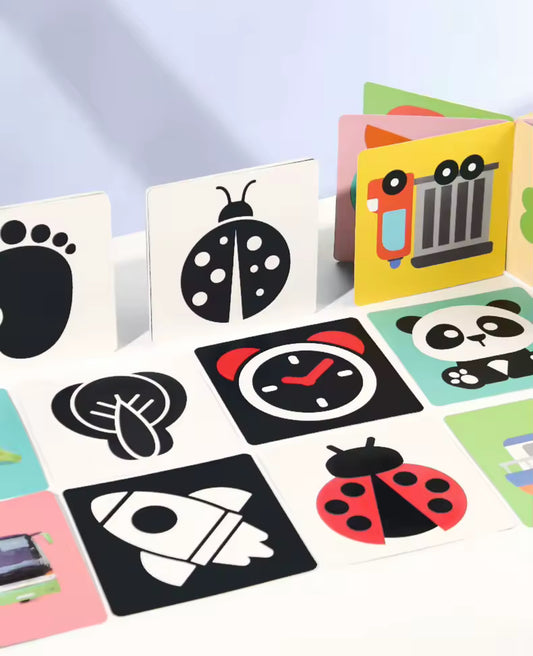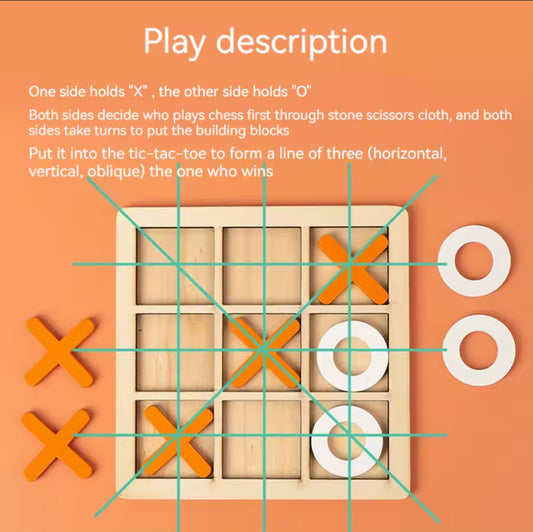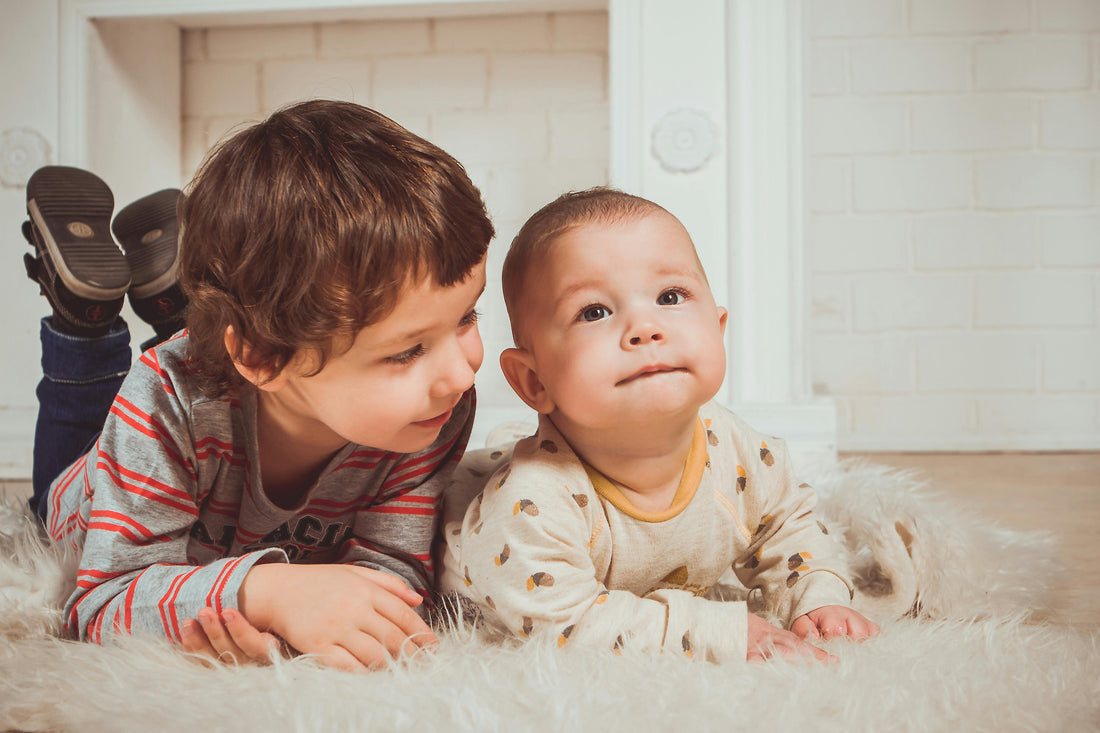
Baby Vision and Cognitive Development: How Your Little One Sees the World
Share
Watching your baby grow and change is one of the most incredible parts of parenthood. Every smile, giggle, and curious glance is a sign of their developing brain at work. One area that plays a huge role in their overall growth is vision. Sight doesn’t just help babies see the world—it helps them understand it, connect with others, and develop important cognitive skills. But what does baby vision really look like in the first year, and how can you support it? Let’s break it down with a baby vision development chart and some simple, practical tips.
What Does Baby Vision Look Like?
When babies are born, their eyesight is still a work in progress. In fact, newborns see the world very differently than we do. Their vision is blurry, they can’t yet perceive all colors, and they’re only able to focus about 8–12 inches away—just enough to see the face of a parent during feeding or cuddling.
So, if you’ve ever wondered “what does baby vision look like?”, picture a soft, hazy image with mostly shades of gray. Over time, that blurry world slowly sharpens, brightens, and fills with detail. It’s this gradual process that shapes how babies learn, interact, and build emotional connections.
Here’s a simple baby vision development chart showing how sight typically develops in the first year:


This timeline is a great way to visualize how quickly your baby’s vision changes and why each stage matters.
Why Vision and Cognitive Development Go Hand in Hand
Vision is more than just eyesight—it’s how babies learn to make sense of the world. Every new visual milestone supports bigger brain and body skills:
- Recognizing faces helps with bonding and emotional development.
- Following objects builds hand-eye coordination and lays the foundation for motor skills.
- Learning colors and patterns stimulates memory and attention span.
- Depth perception gives babies the confidence to reach, crawl, and eventually walk.
As your baby’s vision becomes clearer, they start connecting what they see with what they remember and feel. That’s the magic of cognitive development in action.
Baby Vision Chart: A Tool for Parents
Doctors sometimes use a baby vision chart during checkups. Unlike adult eye exams, these charts rely on high-contrast images, shapes, or patterns to see how babies respond. At home, parents can try similar activities to encourage strong vision.
One of the best ways to do this is by using high-contrast cards and toys. Babies, especially in the first few months, are drawn to bold black-and-white designs. Products like FirstSparks Baby Vision Cards are designed to capture a baby’s attention, helping them focus while also strengthening early brain connections. It’s a simple, fun way to support both vision and cognitive development.
How to Encourage Healthy Vision Development
The good news? Supporting your baby’s eyesight doesn’t require anything complicated. A few daily habits can make a big difference:
1. Show them high-contrast patterns: Black-and-white cards or bold shapes work best in the early months.
2. Spend time face-to-face: Hold your baby close while feeding or playing. Babies love studying your facial expressions.
3. Encourage reaching and grabbing: Place colorful toys just within reach to build coordination.
4. Give plenty of tummy time: This strengthens muscles that support head movement and visual tracking.
5. Change up their view: Move their crib or playmat occasionally to give them fresh things to look at.
A Visual Example: Baby Vision Chart by Stage
 Here’s a quick snapshot of what kinds of visuals babies respond to as they grow:
Here’s a quick snapshot of what kinds of visuals babies respond to as they grow:
Newborn (0–1 month): High-contrast black-and-white shapes.
2–3 months: Bright primary colors and familiar faces.
4–6 months: Moving objects and colorful toys.
7–12 months: Picture books, smaller objects, and more detailed images
The Emotional Side of Vision
It’s easy to think of vision as just “seeing,” but it’s also tied to how babies feel. Locking eyes with a caregiver builds security. Recognizing a parent’s smile creates joy and trust. These little visual cues eventually blossom into empathy and social awareness.
Supporting your baby’s vision, then, isn’t just about their eyesight—it’s about helping them build meaningful connections with the people and world around them.
When to Talk to a Doctor
Every baby develops at their own pace, but it’s always a good idea to check in with your pediatrician if you notice:
- No eye contact by around 3 months.
- Eyes frequently crossing or drifting.
- Trouble following objects by 4 months.
- Little interest in visual play or faces.
Early attention can make a big difference in long-term vision health and cognitive development.
Final Thoughts
Your baby’s vision is on an incredible journey in the first year. From blurry beginnings to sharp, curious focus, each stage shapes not only what they see but also how they think, feel, and explore. By understanding these milestones and offering simple support—whether through face-to-face time, colorful toys, or tools like FirstSparks Baby Vision Cards—you’re giving your little one the best start in both vision and cognitive growth.
After all, every gaze, every glance, and every moment of eye contact is a step toward discovery.


